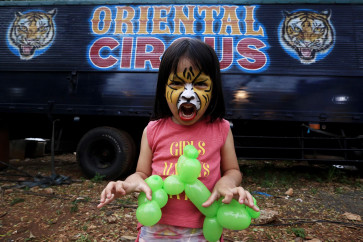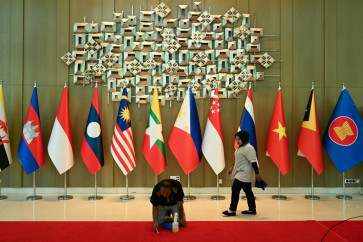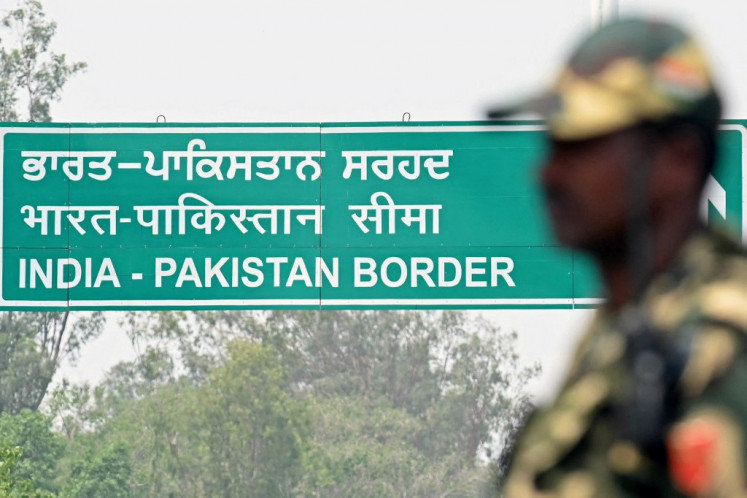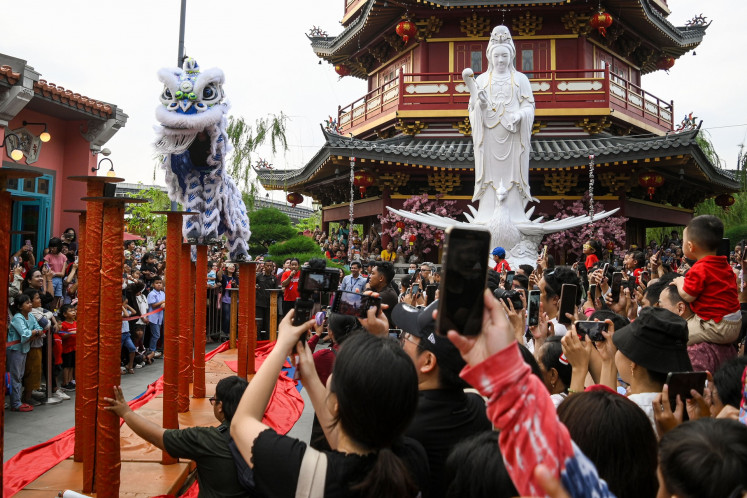A Revival of Batik Kudus
All smiles: Miranti Serad Ginanjar poses with the newly launched coffee table book Batik Kudus The Heritage in Jakarta
Change text size
Gift Premium Articles
to Anyone
 All smiles: Miranti Serad Ginanjar poses with the newly launched coffee table book Batik Kudus The Heritage in Jakarta.(JP/Tertiani ZB Simanjuntak) (JP/Tertiani ZB Simanjuntak)
All smiles: Miranti Serad Ginanjar poses with the newly launched coffee table book Batik Kudus The Heritage in Jakarta.(JP/Tertiani ZB Simanjuntak) (JP/Tertiani ZB Simanjuntak)
A
span class="caption">All smiles: Miranti Serad Ginanjar poses with the newly launched coffee table book Batik Kudus The Heritage in Jakarta.(JP/Tertiani ZB Simanjuntak)
If a motif on a piece of batik cloth can tell a story about its place of origin, each piece of batik Kudus shows centuries of history of acculturation.
The only region in Java with an Arabic name (derived from al-Quds, meaning 'the holy one', as well as the Arabic name for Jerusalem), Kudus is an important city in the history of Islam in Indonesia, dating back to the 16th century.
'Batik culture was a tool in spreading Islam in the past,' said collector Miranti Serad Ginanjar.
'There are motifs of Javanese writing interpreting Arabic calligraphy and the stories of Islamic teaching.'
For centuries, batik artisans in Kudus, Central Java, upheld the legacy of the followers of Sunan Kudus, or Syekh Ja'far Shodiq, the founder of Kudus, in Langgar Dalem village located near the iconic Kudus Tower.
The characteristic batik produced in the village uses shades of terracotta colors. As batik-making spread to other villages, a more diverse color palette of purple, green, blue and brown was added.
Besides that, another characteristic of batik Kudus is the use of dot motifs, which were inspired by rice grains, the major agricultural product on the island.
Although batik Kudus at first glance looks similar to other batik produced along the coastline of Java such as Pekalongan, Semarang and Lasem, influences from Arabic, Chinese and even Dutch cultures contribute to the rich details of batik Kudus.
The detailed and descriptive motifs of batik Kudus and the artistic choice of colors had made it
a sought-after sartorial and collectible item.
'I met German curator Rudolf G. Smend years ago and at his museum he kept batik Kudus, for which bidders asked for US$20,000 at the time,' said Miranti, adding that the most sought-after fabric was produced between 1930 and 1940.
The acquaintance triggered a quest to find batik Kudus in many museums in different countries and collections in Indonesia. As of the early 2000s, the batik had become a rare item even in Kudus, Miranti's birth town.
'I found batik Kudus at the British Museum which was brought by traders selling batik from Semarang and Kudus at the night market in London in the 1870s.'

Her findings and research on the classical batik were documented in a coffee table book titled Batik Kudus The Heritage.
In the book she revealed stories behind the popular motifs of different eras.
Circa 1930, batik Kudus was enriched with a touch of Chinese-influenced motifs and colors with artisan Lien Boen In on the frontline.
Later in its development, batik Kudus also adopted clove flowers as motifs to represent Kudus as the birthplace of kretek (clove cigarettes).
In more modern days, the motifs have represented the machines used in kretek factories and the logo of kretek producers.
The more affordable batik cap, made using printing blocks, and batik print, which is machine-produced, that emerged in the 1980s slowed down production using the hand-written wax-resist dying technique of batik Kudus.
In 2005, 75-year-old Ni'amah was the only batik Kudus artisan left.
In her efforts to revive the heyday of batik Kudus by establishing Galeri Batik Kudus together with the Djarum Foundation, Miranti met with Yuli Astuti, a self-trained batik Kudus artisan who shared her obsession.
'Ibu Yuli gives batik lessons to young women and creates new motifs,' she said, adding that it was her dream to establish a community of batik artisans similar to the likes of Pekalongan and Solo, and become a major tourist destination.
Some of the new motifs created by Yuli were also included in the book.
'I also reintroduced the old motif of the flipped boat, which actually came from a story of a Chinese trading boat that rested on Mount Muria in Kudus. There were artifacts from China found on the mountain,' she said at the book launch.
'Each and every motif in batik Kudus has its story and contains a life philosophy, so mine is also derived from local wisdom,' said Yuli, who has registered her creations with the intellectual and property rights directorate.
Another speaker at the discussion that followed the book launch, Nita Kenzo, who is the founder of Galeri Batik Jawa, said that the gallery had similarly reasserted the use of natural dyes in batik to keep local wisdom alive.
'We are trying to produce batik in its old fashion colors, made of natural dyes in our efforts to protect the environment while sustaining national culture,' she said.









